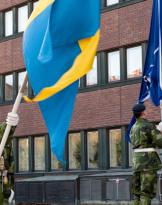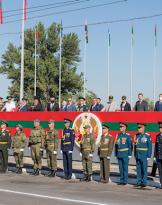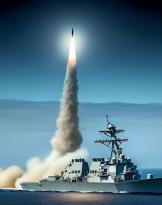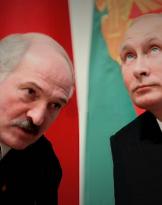It seems almost inconceivable that up to a generation ago there was no internet, there were no smart-phones, GPS did not exist, there was no digital photography, there were no social ... so these tools have become part of everyday life. It was a revolution inspired by technology and that quickly hit every field of sociality. In the Italy of 4.0 the way of working has changed, the way of producing, the way of communicating, the way of traveling, the way of getting informed ... and the perception of the threat to the national vital spaces has also greatly reduced.
Among the many and radical social changes, however, it seems that the attractiveness of the military career has not changed in young Italians. Indeed, judging by the numbers of those who present themselves at the competitions, it even seems that this has increased compared to the times of the cold war. This, despite the salary level and the social consideration for the military profession, have not changed significantly over time and the prospects for future improvements appear to be rather poor.
While serving the employment data, which exists and it is useless to deny, the phenomenon of the many young people who today aspire to a military profession is significant and deserves to be analyzed. In particular, it is useful to focus on the many young people who compete for the Academies, as for basic preparation they would seem to have more employment options than young people taking part in other military competitions. In turn, this exercise helps to identify the challenges that these young aspiring officers, who have become a ruling class, will have to face.
Professor Fabrizio Battistelli, who is an academic very attentive to the military universe, provided a sociological explanation of this phenomenon. According to the scholar in the 80 years of the last century there has been in the Western world and in the Italian one in particular the progressive transformation from a model of modern definable military organization to a subsequent model definable as post-modern.
 Incidentally, this transformation coincided with the setting of the cold war.
Incidentally, this transformation coincided with the setting of the cold war.
Where post-war years up to the 80 years in the military world prevailed dynamics aimed at a more technical qualification of the staff, its specialization and a gradual rapprochement between the grades and roles: in the post-modern they were also gradually imposed other motivations that can be defined as "hedonistic". Since then, self-fulfillment and research into new and stimulating experiences have been the dominant motivations within the military structure, together with the need for holistic preparation of individuals who value the strictly specialized one. At the same time, the recognition of individual merits and skills is perceived as necessary for the overcoming of flatness and homogenization judged to be limiting and unjust.
The increasing use outside the area, which is the main feature of the post-Cold War military engagement, would therefore be more in tune with the intimate aspirations of today's Italian soldiers: much more than the flat and exhausting static use of the Cold War times, comparable to many traits in a context from "Fortress Bastiani".
The analysis of Professor Battistelli appears convincing, but there is also the other and concerns the military context and specifically the concreteness that he acquired after the Cold War.

Apparently the context of the cold war was clear and linear: in reality it was the opposite and to a minimally aware analysis all the artificiality and also the ambiguity of many assumptions of that era was transparent.
Although the enemy was well identified and there were clear defense methods, which were the same as always: alliances against alliances, armies against armies in extraordinary continuity with what had always happened in the past, the most warned, especially among the military , perceived the artificial data of these plans. A certain way of understanding national sovereignty also appeared ambiguous, resulting in a defensive equidistance from all the neighbors: some even allies. Not stated explicitly, but very present in the facts and materialized in the plans and deployment of the Departments that responded to the precautionary criterion of "you can never know".
As for the defense against a hypothetical assault by the Warsaw Pact, if it was clear what to do as it was obsessively reiterated in the exercises, it was not so clear why. In fact, the basic reason why the Soviets were supposed to invade Western Europe and therefore Italy too, destined to be reduced to piles of smoking rubble, escaped.
The same proud affirmation of the full national sovereignty in terms of defense created many perplexities as it was impossible to figure out which neighbors one should have defended against.

As perplexed by the armed forces structured to have "little but everything" based on the precautionary principle of "you never know". The perplexities increased when it was found that for various reasons the "little of everything" often became "a little too little" to be credible.
All this now belongs to the past, even if it is still alive in the memory of the generations who lived through those times of cold war.
Today the context is more complex but certainly less artificial and less ambiguous. We are talking about security and defense, from even non-state threats, as a whole. We think in terms of multinational rather than national approaches and we assume asymmetric scenarios of use of the armed forces, which are militarily more realistic, less ambiguous and more felt by the national community than those of the Cold War.
The overcoming of certain historical ambiguities of military context, together with the sociological evolution of the Military Institution are therefore the factors that make a career of responsibility in the Armed Forces of the Republic still so attractive for many young people who aspire to enter the Academies. It would be unfair to deny even ideal motivations in these young people who choose to serve the national community: the impression, however, is that their idealism finds its concreteness in the factors outlined above rather than in rhetorical gestures and expressions.
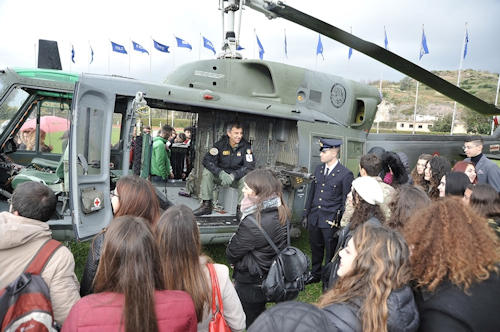
At this point, it is natural to question the challenges that these ambitious, passionate and capable young people will have to face tomorrow when they take on positions of responsibility.
The first challenge will be to finally bring to completion a true defense reform that is not yet another linear reduction of the existing, but definitely exceeds the conceptual and organizational frameworks linked to the past.
This will lead to a more intense integration of forces, overcoming cramped and by now dated logics of a single armed force, both on an organizational and a conceptual level. The hope is that the commanders of tomorrow spend less intellectual resources to discuss the wonders of air power, or the naval power and land power. Intellectual exercises very elegant but that underlie the hidden ambition of the supremacy of one over the others, which no longer makes any sense. In today's inter-force reality and more in that of tomorrow, all contribute, but nobody is resolutive individually.
Another challenge will be to overcome the paradigm of operational self-sufficiency in favor of complementarity. In other words, it will be necessary to pass from armed forces endowed with "little but everything" to armed forces endowed with "what is actually needed". These are the concepts already outlined both in NATO and in the European Union but which will need to be given substance.

A further challenge will be that of not losing the pace with technological development.
The current generation of Armed Force leaders was born in an essentially electro-mechanical and analog world. We are now fully in the electronic - digital world.
Switching from one to another of the worlds has not been easy for generations that have not been born digital; they tried to do their best, but unfortunately they did not manage to exploit the full potential of the new technological world. Not for lack of capacity, but for objective difficulties due to the generational gap. It is in tomorrow's leaders, digital natives, to take up this challenge and take full advantage of the extraordinary possibilities that are on the horizon of technological progress in this sector
Finally, the internationalization effort must be continued, bearing in mind the strategic objective of integrating national defense structures into a more European dimension.
These are formidable challenges, especially if compared to the anguish and prosaicity of the present climate in our country, but nevertheless such as to make the profession of arms in the Italy of 4.0 a profession still fully attractive.
(photo: US DoD / web / Defense)




